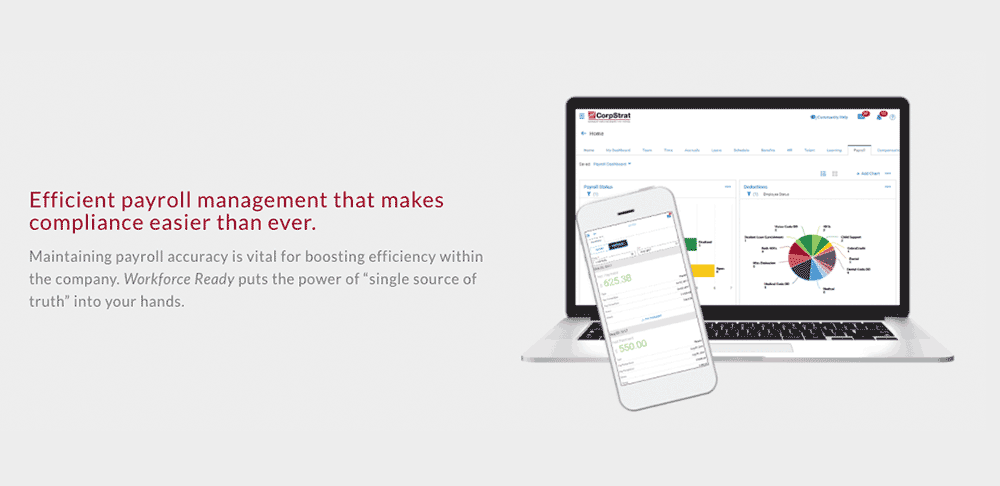
HR Compliance
The Office of Administrative Law approved the recent amendment proposed by FEHA on National Origin rules effective July 1, 2018.
Although California already has strict rules that prohibit harassment and discrimination based on protected classes, including national origin, the new regulations expand those rules. The regulations protect both applicants and employees, including individuals who are undocumented.
The regulations also broadly define “national origin” to include an individual’s or ancestors’ actual or perceived:
- Physical, cultural or linguistic characteristics associated with a national origin group.
- Marriage to or association with persons of a national origin group.
- Tribal affiliation
- Membership in or association with an organization identified with or seeking to promote the interests of a national origin group.
- Attendance or participation in schools, churches, temples, mosques or other religious institutions generally used by persons of a national origin group.
- Name that is associated with a national origin group.
In the regulations, these policies or practices may constitute national origin discrimination:
- Language restriction policies, including English-only policies: These policies are unlawful unless the restriction is justified by business necessity and is narrowly tailored, and the employer has notified employees of the restriction and the consequences for violating it. In addition, English-only policies are never permitted during non-work time, such as meal and rest breaks and unpaid employer-sponsored events.
- Accents: Discrimination based on an applicant’s or employee’s accent is unlawful unless the employer can show the accent materially interferes with the applicant’s or employee’s ability to do the job.
- English proficiency: An employer cannot discriminate based on an applicant’s or employee’s English proficiency unless the employer can show that the proficiency requirement is justified by business necessity.
- Height and weight requirements: The regulations acknowledge that height and weight requirements may have a disparate impact on the basis of national origin. If that occurs, the requirements will be unlawful unless the employer can show that the requirements are job related and consistent with business necessity, and that the purpose of the requirement cannot be met by less discriminatory means.
- Recruitment and job segregation: It is unlawful to recruit applicants or employees based on national origin, and to assign positions, facilities or geographical areas of employment based on national origin.
- Immigration-Related practices: Employers are prohibited from inquiring into an applicant’s or employee’s immigration status or discriminating against an applicant or employee based on immigration status, unless required to do so by federal immigration law. Undocumented applicants and employees are protected to the same extent as any other applicant or employee.
- The regulations also reiterate FEHA’s prohibitions on harassment and retaliation based on national origin.
Bay Area Salary History Ban Effective July 1, 2018
Taking effect July 1, 2018, San Francisco’s Consideration of Salary History Ordinance, also known as the Parity in Pay Ordinance, will ban employers from considering the current or past salary of an applicant in determining whether to hire the applicant or what salary to offer the applicant. The San Francisco ordinance is similar to the new California Salary History Ban law.
The ordinance applies to any employer required to register to do business in San Francisco, including job placement, referral and other employment agencies. A parallel ordinance applies to employers that are contractors or subcontractors with the City of San Francisco. The ordinance does not apply to any local, state or federal government except the City of San Francisco.
Applicants who apply for employment to be performed in the geographic boundaries of San Francisco and whose application, either in whole or part, will be solicited, received, processed or considered in San Francisco are covered Applicants applying for employment with their current employer are not covered under the ordinance.
Employers covered by the ordinance are prohibited from doing any of the following:
- Inquiring about an applicant’s salary history, whether directly, indirectly, personally or through an agent, including application forms or interviews.
- Considering or relying on an applicant’s salary history as a factor in determining whether to hire an applicant or what salary to offer an applicant.
Under the ordinance, while an employer is allowed to consider salary history when an applicant discloses it voluntarily and without prompting, salary history alone cannot justify a pay disparity between employees of different sexes, races or ethnicities who perform substantially similar work. However, under state law, salary history cannot justify a pay differential. Therefore, employers may not consider prior salary, even if it was voluntarily disclosed by the applicant.
- Refusing to hire or retaliate against an applicant for not disclosing his/her salary history.
- Releasing a current or former employee’s salary history to a prospective employer without written authorization from the current or former employee (subject to limited exceptions).
San Francisco employers will be required to post a notice informing employees of their rights under the ordinance. The notice must be posted in a conspicuous place at every workplace and jobsite in San Francisco in English, Spanish, Chinese and any other language spoken by at least five percent of the employees at the workplace, job site or other location where it is posted. Employers must also send a copy of the notice to any labor union representing its employees in San Francisco.
The San Francisco Office of Labor Standards Enforcement (OLSE), the agency to enforce the ordinance, will only issue a warning and notice to correct an employer’s first violation and for any violation that occurs from July 1, 2018, through June 30, 2019. Starting July 1, 2019, the OLSE may impose administrative penalties on employers for violations other than a first violation. The OLSE may also refer the action to the City Attorney, who may initiate a civil action for violations of the ordinance.
The OLSE is required to issue rules interpreting the ordinance before July 1. More information about the Consideration of Salary History Ordinance can be found on the OLSE’s website.
Benefits
HIPP Form Verses HIPAA
Be careful not to confuse HIPP, California’s Health Insurance Premium Payment Program with HIPAA, Health Insurance Portability Accountability Act.
The California Labor Code Section 2807 imposes a notice requirement on every California employers who are subject to the federal COBRA health insurance continuation requirements. This notice requirement alerts terminated employees of the possibility that their health insurance premiums may be paid for through the California Health Insurance Premium Program (HIPP).
Health Insurance Premium Payment Program
The Health Insurance Premium Payment Program was established under Section 120835 of the Health and Safety Code and Section 14124.91 of the Welfare and Institutions Code. It is a program that will pay health insurance premiums for certain persons who are losing employment and who have a medical condition that requires treatment. The over-riding principal guiding the HIPP program is whether it would be cost-effective for the Department of Health Services to pay the premium for third-party coverage.
Paying for third partying health insurance is not deemed to be cost-effective if:
- A Medi-Cal beneficiary is also enrolled in Medicare;
- There has been full reimbursement for health care premiums; or
- A beneficiary is enrolled in a Medi-Cal managed care plan.
It is also important to note that the HIPP program cannot be ordered by the court. So, if a non-custodial parent is ordered by the court to provide medical coverage, then there is no eligibility for HIPP.
Notice Requirement
A standardized notice of the Health Insurance Premium Program is available from the California Health and Human Services Agency (DHS). The notice informs terminated employees of the existence of the program and the eligibility requirements. To be eligible for HIPP the applicant must:
- Have full scope or fee-for-service Medi-Cal;
- Have a medical condition that requires treatment with a cost-savings to Medi-Calof 1.1 or greater; and
- Have a current health insurance policy that covers the medical condition or a COBRA policy in effect at the time of the application
The notice also provides information about how to apply for the benefit. An employee fills out an application form available from the California Department of Health Care Services. New applications are typically processed within 30 days of receiving all required documentation. Complete information about the process is available from the DHS.
COBRA Notice Requirements
Whenever an election of COBRA is required to be sent by an employer, California employers are also directed to provide notice of HIPP. California Labor Code Section 2807 does not provide the timing of the notice, but does say that the notice is required, “along with the notification required” by COBRA. The assumption is that the same notification time period applies.
Recommended Action
We suggest that each employer ensure that a copy of the HIPP notice is provided to each terminating employee at the time such employee is provided the COBRA health insurance continuation notice. Since such notices are often provided by a third-party plan administrator, it would be prudent for the employer to direct that the HIPP notice be sent as well.
Payroll Compliance
IRS Encourages ‘Paycheck Checkup’ for More Employees
Employers should encourage more employees to use the IRS withholding calculator, www.irs.gov/w4App, to make sure their federal income tax withholding is in line with the changes made by Public Law 115-97, known as the Tax Cuts and Jobs Act (TCJA), the IRS said. Employees checking their withholding now can help protect against having too little or too much tax withheld.
The IRS is encouraging employers to inform seasonal and part-year employees, two-income families, people with multiple jobs, and employees who itemize their deductions that they might need to revise their Forms W-4.
The withholding calculator asks about the dates of an employee’s employment and accounts for a part-year employee’s shorter employment rather than assuming that the weekly tax withholding amount would be applied to a full year [IRS, Seasonal, Part-year Workers Urged to Check Tax Withholding Amount, 5-9-18 https://www.irs.gov/newsroom/ seasonal-part-year-workers-urged-to-check-tax-withholding- amount]. The calculator makes recommendations for part- year employees accordingly. If a taxpayer has more than one part-year job, the withholding calculator can account for this as well.
In contrast, the Form W-4 worksheets do not distinguish between part-year and full-year jobs. Two-income families, multiple-job holders, and individuals with more complex tax profiles, such as two incomes or multiple jobs, may be more vulnerable to being underwithheld or overwithheld [IRS, Two-Income Families, Taxpayers Working Multiple Jobs Should Check Withholding Amount, 5-24-18 https://www.irs.gov/ newsroom/two-income-families-taxpayers-working- multiple-jobs-should-check-withholding-amount].
The withholding calculator allows users to enter income from multiple jobs or from two employed spouses. It also ensures that these taxpayers apply their 2018 tax deductions, adjustments, and credits only once – rather than multiple times with different employers.
The TCJA nearly doubled standard deductions and changed several itemized deductions. Some individuals who formerly itemized may now find it more beneficial to take the standard deduction, and this could affect how much taxpayers need to have their employers withhold from their pay.
Even those who continue to itemize deductions should check their withholding because of changes made by the TCJA [IRS, Taxpayers Who Usually Itemize Deductions Should Check Their Withholding to Avoid Tax Surprises, 5-16-18 https://www.irs.gov/newsroom/taxpayers-who-usually- itemize-deductions-should-check-their-withholding-to- avoid-tax-surprises].
When these taxpayers use the withholding calculator, they can indicate whether they are taking the standard deduction or itemizing. If they are itemizing, they will enter estimates of their deductions. The withholding calculator applies the new law to these amounts when figuring the withholding.
Taxpayers with even more complex situations might need to use Publication 505, Tax Withholding and Estimated Tax, instead of using the withholding calculator.









